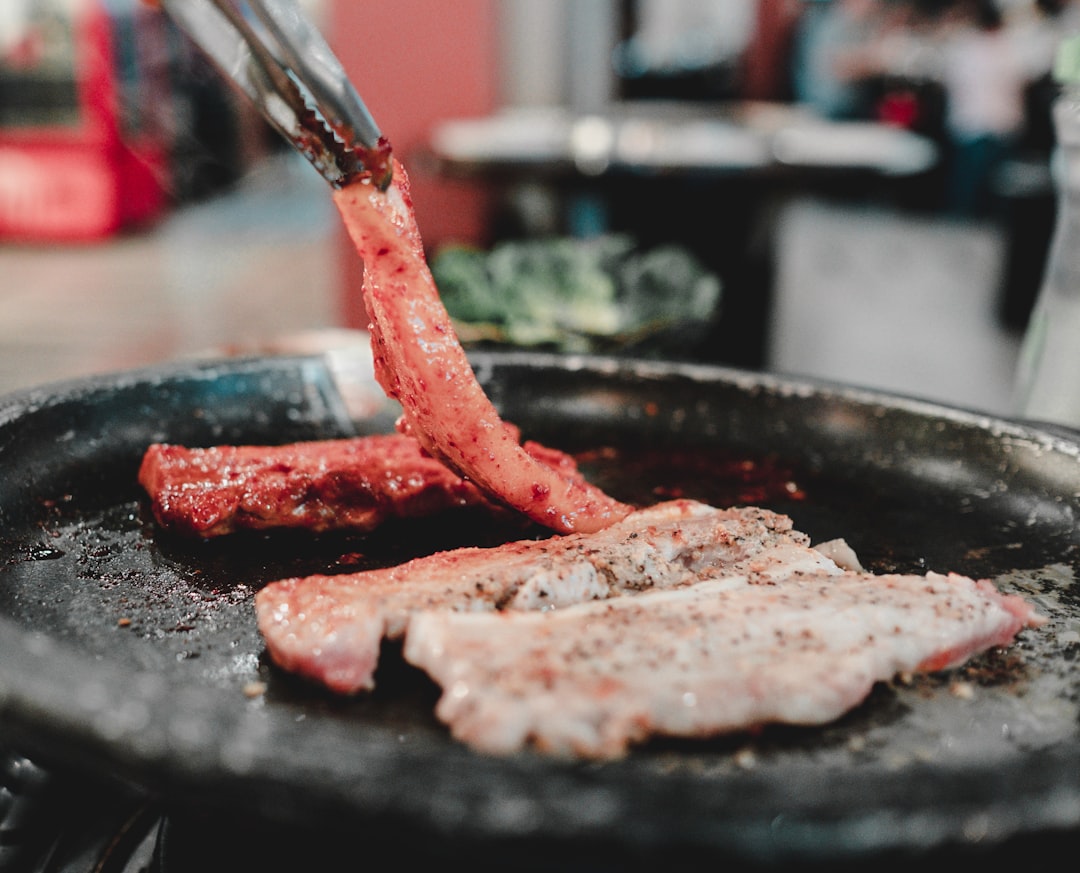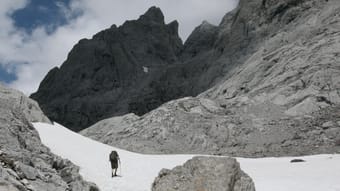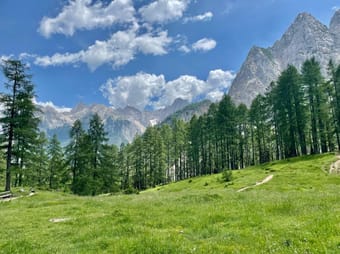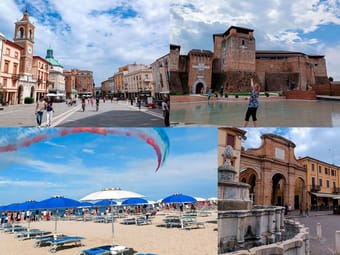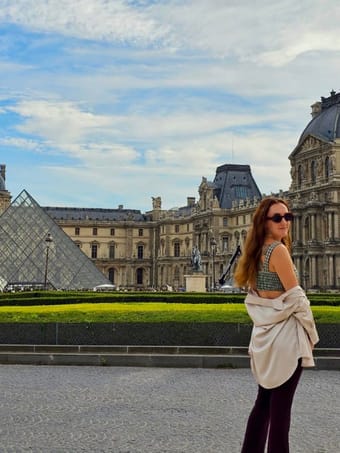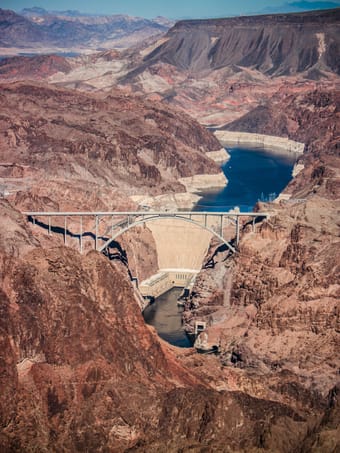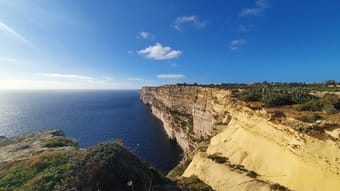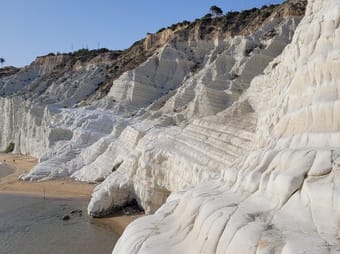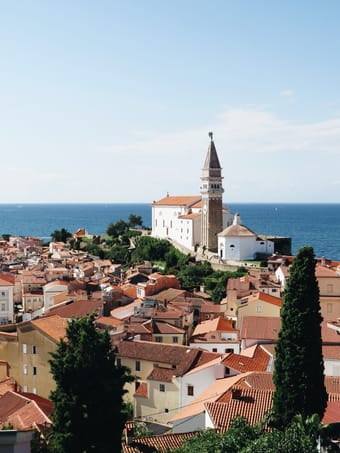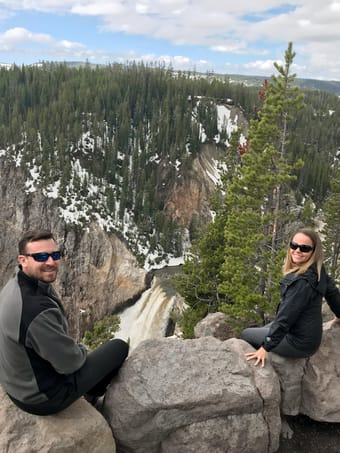Results for Fountain Valley
Growing up half Vietnamese, I have a deep appreciation for the amount of delicious Viet food options in OC.
This guide explores Vietnamese food beyond just pho and banh mi. We'll try grilled scallops, spring rolls, meat buns, egg coffee, desserts and more.
Note: This guide is a little pricey because many of the spots and their specialties were recommended by word of mouth. Every recommendation on this list has been vetted by me and my family, who have a pretty high bar for Vietnamese food.
Foodie • People & Culture
$8.00
8
Seven-day trek based in refugios.
INTRODUCTION
The Picos de Europa is a region of limestone peaks reaching over 2500 metres above sea level; the highest being Torre de Cerredo at 2650 metres. The route described here is one that I hiked alone in early summer. The best time to tackle the route is between June and September. There is more likely to be snow on the high passes in early June but they are usually not to difficult to negotiate.
The Picos de Europa is not as well known as the Pyrenees or Alps and as such the hiker traffic is less and the tourist infrastructure is less developed. This makes the area feel less spoilt but it can also make it a more challenging area to explore with fewer trails and little to no signposting. Always take a map with you: the Editorial Alpina 1:25,000 maps are the best. I took these and also used the outdooractive app and downloaded the relevant map tiles. This is useful for pinpointing where you are, in what can be confusing terrain. I was lucky to have clear weather for my entire trek but I would imagine that it's pretty difficult to navigate when the cloud is down on the mountains so take a compass too.
You can stay in refugios every night on this hike and wild camping is permitted above 1500m; details below.
I can't recommend the Picos de Europa as a hiking destination enough. The mountains are magnificent but there are also beautiful extensive woodlands at lower altitudes, as well as meadows full of wildflowers and butterflies. The juxtaposition between the stark limestone peaks and the gentle greenery of the valleys is beguiling.
DISCLAIMER: Please note that hiking in the Picos de Europa is not risk free. It is a very challenging area in which to hike. I accept no responsibility for any accidents you may experience while hiking this route. You are responsible for your own safety. Some of the dangers and difficulties are listed a little further down this guide.
HOW BUSY?
Unlike some of the more well know hikes around Europe this trail is less well trodden and as such the trail can be quite hard to follow at times, and at other times there is no trail! Despite this, refugios, being small, fill up fast (see below).
REFUGIOS
The hike is made easier if you stay in the staffed refugios where you can recharge your metaphorical batteries. Accommodation at these mountain huts is in communal dormitories and you will need to bring your own sleeping bag. It's best to book ahead as they are often full throughout the summer. Prices are around the €12-17 mark and they also do affordable meals (breakfast, picnic lunch and dinner).
There is also a handful of unstaffed, very basic mountain shelters with no services and no beds but these can be a good option in an emergency. Most of the refugios only accept cash so be sure to take plenty with you before you set off as there are no ATMs! All the refugios on the route are listed in the route description below with website links.
WILD CAMPING
Camping is only permitted at 1500m above sea level or higher. There is not much water anywhere above this altitude so be sure to fill up when you get the chance (at refugios) before camping in a remote spot.
POSADA DE VALDEON
This beautiful village tucked in the valley between the Macizo Central and Macizo Occidental is a lovely place to wander for a few hours. At the centre of the village there are a number of restaurants and bars and a small square with a water fountain. If you need somewhere to stay before or after the trek you'll find hotels, guest houses and a youth hostel. There is a hotel recommendation and link in the route description.
In the centre of the village is a pharmacy should you need any blister plasters! And on the road to the west of the village is the National Park office where you can find information about hiking and anything else to do with the national park.
GETTING THERE
From the UK there are Ryanair flights to Oviedo (Asturias airport) from London Stansted. A bit further afield you can get flights to Bilbao and Santander from the UK and the rest of Europe. Getting from the airport is a little complicated but there are buses to Posada de Valdeón from Oviedo changing in Cangas de Onis. The journey takes about 4.5hrs. There are also buses from Santander and Bilbao changing in Llanes and Riaño with the journey taking around 15hrs from Bilbao.
An easier but more expensive option is to get a taxi. You could also hire a car but of course you will have to leave the car sitting idle in Posada de Valdeón while you do the hike.
FLORA & FAUNA
This area of northern Spain is fantastic for wildlife. At lower elevations the beech and sessile oak woodland stretches for miles over rolling hills. This is part of the boreal forest that once would have covered much of Europe and is home to roe deer, wild boar, red squirrels, pine martens and brown bears.
In the skies you have a good chance of seeing griffon vultures, golden, booted and short-toed eagles, black kites and peregrines. Of the smaller passerine species the Picos are home to red-backed shrikes, black redstarts, spotted flycatchers and black woodpeckers.
But it's the wildflowers in the meadows and on the woodland edges that are the real joy and most easily appreciated. Vetches, cinquefoils and orchids create a colourful patchwork of colours with butterflies bringing the whole scene to life. Look out for swallowtails, fritillaries and hairstreaks.
NAVIGATION
Navigation is difficult as the terrain can be confusing and in many places there is no trail whatsoever. Take a map (1:25K Editiorial Alpina maps are the best), compass and GPS and know how to use them. It's also a good idea to download the map on a relevant map app. I used the outdooractive app but others are available.
WEATHER
Thunderstorms are common, usually in the afternoon and these can be particularly dangerous high up in the mountains. It's best to hike early and get to a refugio by lunchtime if there are afternoon thunderstorms in the forecast. The weather in this part of Spain is very changeable as it has a maritime climate. Rain and thick fog are possible but equally long periods of warm sunshine are not unusual. The best advice I can offer is to be prepared for anything. Pack suncream and a sunhat but don't forget your waterproofs either.
FALLING ROCKS
Rock falls are not unusual as chamois and other hikers can dislodge rocks above you. Getting caught in a rockfall is not so common but not impossible. Be aware and if you see rocks heading your way, and cannot find cover, crouch down on the floor and pull your rucksack over your head and back.
DRINKING WATER
There is very little running water as these mountains are mostly comprised of permeable limestone. You will need to take plenty of water with you each day (I packed three litres every day and usually drank it all). You can fill up at the refugios and there are a few fountains / fuentes although most of the ones I saw marked on the Editorial Alpina map were dry when I found them.
THE SUN
Sunburn and sunstroke are both real dangers and there is little shade. Keep hydrated and wear a sun hat that covers your neck.
TERRAIN
In some places you need to scramble up steep rocky sections. You will need to have experience in this kind of terrain and have a head for heights! The terrain is very rocky and uneven at higher altitudes so you will need strong, sturdy footwear. Trekking poles are also invaluable in providing support and helping you across and up awkward sections. There is also a lot of steep ascent and descent on this route so you will need to be reasonably fit.
DANGEROUS ANIMALS
On many parts of the trail you will encounter cows. In my experience they are very docile and used to trekkers so they shouldn't be of any concern. You may also find flocks of sheep and while these aren't dangerous they are often accompanied by shepherd dogs which have been trained to keep intruders away from the flock. They can be quite intimidating when they start barking at you. If you see sheep ahead it is best to give them a wide berth, even if this means veering away from the trail for a while. If you walk directly towards or through a flock of sheep you risk agitating the shepherd dogs.
Bears are not common in the Picos de Europa but there are bears in other parts of the Cantabrian Mountains, notably Somiedo National Park, not far to the west, and there is always the possibility of seeing an itinerant bear wandering through the Picos. Eurasian brown bears are not as big nor aggressive as the grizzly bears of North America so you shouldn't worry too much about an encounter. It's extremely unlikely you will see one so if you do, consider yourself very lucky.
Wild boar are common in the woodlands at lower altitudes. They are not as aggressive as some people will tell you and tend to be nocturnal. I did see some in the daytime near Vegabaño. As soon as they saw me they ran away, crashing through the undergrowth. As with any large animal it's best to simply give them plenty of space to move away from you.
I hope none of this advice puts you off hiking in the Picos de Europa. Yes, it's a challenging mountain area but the rewards for hiking here are great. Enjoy the hike!
Adventure • Nature • Slow Travel • Sustainable/Eco • Mountain • Camping
$12.00
3
Emerald rivers. Glacial lakes. Hidden karsts. Historic cities. Snow-capped peaks. Sun-drenched beaches. Undiscovered wine regions. Untouched forests. You don't have to traipse all over Europe. The little country of Slovenia features everything you love about the continent in one place. So it's even been nicknamed Little Europe.
Start in the Dragon City. Ljubljana survived Roman, Habsburg, and Yugoslavian rule to become one of the greenest capitals in Europe. Then start exploring hidden caves, medieval towns, scenic drives, and a tiny sliver of coastline. There are adventure sports, award-winning restaurants, grand castles, and stunning views along the way. You'll quickly wonder why it's taken you so long to get here.
The Slovenia Guide works as a great circular road trip through Western Slovenia. Start in Ljubljana, drive north toward the Austrian border, head west toward the Italian border, circle through wine country, and end up back in the capital.
This detailed guide includes:
Places: cities, neighborhoods, towns
Stay: hotels, resorts
Eat: cafés, ice cream, Michelin stars, pizzerias, restaurants
Drink: lounges, wine bars, wineries
Shop: antique markets, toy stores
Do: bell towers, boat tours, bridges, castles, cathedrals, chapels, churches, city models, fountains, funiculars, hikes, history museums, information centers, islands, lakes, libraries, monuments, mountains, mountain ranges, national parks, parks, puppet museums, rivers, roads, squares, statues, streams, ticket offices, valleys, viewpoints, waterfalls
Transportation: airports, parking lots
Adventure • Boutique • Foodie • Outdoors • Road Trip • Wine • Faith • History • Luxury • Relaxation
$30.00
0
Get ready for an awesome road trip from sunny Phoenix, Arizona to the bright lights of Las Vegas, Nevada. This trip is perfect for anyone who loves adventure, nature, and fun.
Trip Highlights:
1. Beautiful Desert Views:
* Start your trip through the stunning Sonoran Desert, full of unique cacti and amazing views. Perfect for taking sunrise photos as you drive through this scenic landscape.
2. Sedona’s Red Rocks:
* Take a detour to Sedona to see its famous red rock formations. Hike trails like Cathedral Rock or Bell Rock, and enjoy a nice lunch with great views in this charming town.
3. Historic Route 66:
* Drive on the historic Route 66. Visit fun roadside attractions, vintage diners, and historic landmarks in towns like Seligman and Kingman.
4. Grand Canyon National Park:
* Experience the majestic Grand Canyon. Enjoy popular hikes like the Bright Angel Trail or South Kaibab Trail for breathtaking views of one of the world's natural wonders.
5. Zion National Park:
* Explore the stunning Zion National Park. Hike trails like Angels Landing or the Narrows, and enjoy the breathtaking scenery of towering cliffs and lush valleys.
6. Exciting Las Vegas Arrival:
* Finish your journey in the exciting city of Las Vegas. Explore famous casinos, enjoy top-notch shows, eat at great restaurants, and walk along the famous Las Vegas Strip.
What’s Included:
* Customizable Itinerary: Adjust the stops and activities to fit your needs.
* Must-See Attractions: Tips on the best sights, photo spots, and hidden gems.
* Local Eats: Suggestions for the best local restaurants and food experiences.
Why This Road Trip?
* Flexibility: Perfect for solo travelers, couples, or families.
* Expert Tips: Get the most out of your trip with insider advice.
* Memorable Experiences: Make great memories with a mix of adventure, relaxation, and fun.
Get ready for an epic road trip from Phoenix to Las Vegas. Buy your itinerary now and start planning your unforgettable adventure!
Backpacker • Couples • Family • Camping • Outdoors • Relaxation • Road Trip
$25.00
0
Nestled along the shimmering Adriatic Sea, Rimini beckons with its strategic location at the southern tip of the Po Valley. Fun fact: did you know that the city saw its first bathing establishment open in 1843?
I put together my exact itinerary public transport and a lot of research, which includes:
- Whole day planned
- Interactive map
- Practical info
Note: this is not a PDF but an interactive guide. You can get directions with Google maps, book hotels directly (or we used Booking) and call restaurants.
Everything in one place! Don't forget to download the free Thatch app to get easier access.
Any questions? DM me on Instagram (@petra.hus) or write me an email at petra2hus@gmail.com
Subscribe for new travel guides!🔆😊
50+ • Accessibility • Backpacker • Car-free • Couples • Digital Nomads • LGBTQ+ • Halal • Vegetarian • Family • Gluten-free / Celiac • Groups • Pets • Female Solo • Vegan • Adventure • Wellness • Sustainable/Eco • Slow Travel • Shopping • Romantic • Road Trip • People & Culture • Foodie • Coffee • Camping • Budget • Outdoors
Free
2
Natalie 🦩
Available for hire
‣ Riding the Wild West: A 15-Day (Motorcycle) adventure through Nevada, Utah, and Arizona 🏍️🌵
Embark on the adventure of a lifetime with my firsthand experience as your guide!
Picture this: a thrilling 15-day road trip weaving through the mesmerizing landscapes of Nevada, Utah, and Arizona. Now, here's the beauty – whether you prefer the wind in your hair on a motorcycle, the comfort of a car, or the spacious freedom of an RV, this journey is tailor-made for you.
From the dazzling lights of the Las Vegas Strip to the jaw-dropping beauty of Utah's national parks and the iconic wonders of Arizona, my guide has got you covered. I'll map out each day, pointing out must-see spots, hidden gems, unique sleep locatipons and the best experiences to make your journey unforgettable.
So whether you're revving up your motorcycle, hitting the road in a car, or cruising in an RV, get ready for a road trip filled with breathtaking views, cultural discoveries, and unforgettable moments in the heart of the American Southwest! 🏍️ 🚗 🚐🇺🇸
50+ • Backpacker • Couples • Digital Nomads • Family • Groups • Female Solo • Adventure • Camping • History • Outdoors • People & Culture • RV • Road Trip • Van Life • Photography
$65.00
1
Explore this map, I made as the ultimate France guide, to get inspired and discover the places that will become the highlight of your next trip. Many of the places in this map will have helpful booking links and/or links to social media posts with more inside information. I will be adding to this guide and my knowledge grows, please be encouraged to reach out with your own favorite spots to be included.
I see all my Guide Maps as perpetual works in progress and will do my best to add to and update them as my knowledge expands.
Use my Klook promo: ACKUGARTE for 10% off for new users and 3% off for returning users.
Couples • Car-free • Backpacker • Digital Nomads • Family • Groups • Female Solo • 50+ • Adventure • Architecture • Art • Boutique • Budget • Coffee • Design • Foodie • History • Luxury • Outdoors • People & Culture • Photography • Road Trip • Romantic • Shopping • Wine
Free
35
Welcome to the ultimate guide for experiencing Las Vegas without ever placing a single bet! While the city is renowned for its vibrant casinos and high-stakes gambling, there's so much more to discover beyond the slot machines and card tables. Join me as we uncover the hidden gems, thrilling attractions, mouthwatering dining spots, and unforgettable entertainment options that make Las Vegas a playground for non-gamblers. Whether you're a culture enthusiast, a foodie, an adventure seeker, or simply looking to soak in the glitz and glamour, Las Vegas has something spectacular in store for you!
50+ • Accessibility • Car-free • Couples • Family • Groups • LGBTQ+ • Plus Size • Female Solo • Adventure • Boutique • Foodie • Luxury • Outdoors • Photography • Road Trip • Romantic • Shopping
$5.00
2
American Southwest Desert Adventure
This Ultimate Southwest guide is an accumulation of over 80 HOURS of research and planning. I have been to this area a dozen times and I have done this route and also different portions of the route on their own so I compiled all of my time in this beautiful area into a great 10-14 day road trip guide. You can spend less time or more time on your trip based on your needs. This itinerary has over 90 plus stops including places to hike, sights you can't miss, the best places to stay, the best places to eat, great photo stops, and much more.
We have taken all of our experiences from our trips in the beautiful Southwest Desert of America and made the perfect itinerary for you. You won't have to spend hours upon hours trying to figure out where to go or what not to miss. This is your one-stop shop to be fully prepared to make this the trip of your dreams.
If you follow this guide I promise you this will be a trip of a lifetime and you will see some amazing experiences. If you want to take your own route that's fine use this as a great start to plan your epic adventure. You can't go wrong.
Tag us in the photos you take - we'd love to see your experience! @thejourneyest2016
Family • Couples • Digital Nomads • Groups • Backpacker • Female Solo • Adventure • Photography • Outdoors • RV • Road Trip • Budget • Camping • Van Life • Overlanding
$15.00
5.0
(1)
15
Just came back from a 10-day journey through Georgia, where history, culture, and natural beauty converge. From charming cobblestone streets to breathtaking mountain vistas, this adventure promises to immerse you in the diverse tapestry of this Southern gem.
🖱️ Don't forget to click on the place to see my personal notes.
Backpackers • Backpacker • Female Solo • Road Trip • Foodie • People & Culture • Overlanding
$5.00
9
Pedro Pereira
Available for hire
Unveiling Georgia - a comprehensive road trip guide through the heart of the Caucasus
Georgia, nestled between Europe and Asia, is a land of diverse landscapes, ancient traditions, and warm hospitality. Bordered by the rugged peaks of the Caucasus Mountains to the north and the stunning shores of the Black Sea to the west, Georgia boasts a rich tapestry of natural beauty.
This guide includes:
- introductory note
- places to visit (museums and cultural venues, open squares, beaches and others)
- photo spots
Get to see more from my travels on my Instagram (@pedralexpereira) and Flickr (flickr.com/photos/pedralexpereira)
Accessibility • Backpacker • Groups • LGBTQ+ • Adventure • Architecture • Budget • History • Outdoors • Overlanding • People & Culture • Photography • Relaxation • Road Trip • Wellness • Slow Travel
$10.00
2
Welcome to my completely unorganized but oh-so-helpful map of Texas! An absolute smorgasbord of my own travels and research, suggestions from friends and strangers, and many treasures found along the way, this is where I compile all things Lone Star State for my future trips and yours. Things I particularly love that you’ll find a lot of:
☕️ Coffee shops & bakeries
🌮 Local cuisine
🏛️ Museums of all kinds
🌳 Gardens & parks
🛏️ Boutique hotels
🍕 Small regional chains with good reputations
All my guides in this category are $5 per 100 places included, but since I add to these constantly, you can lock down the lowest price today and gain a lifetime access!
Couples • Family • Architecture • Art • Budget • History • Foodie • Design • Coffee • People & Culture
$10.00
1
Where else but in the middle of the Mediterranean Sea might you find such a little, gorgeous island? Malta is a lovely place to go for a summer beach holiday, however… the islands of Malta have a rich history that has yet to be explored. Will a week be sufficient? Due to its compact size, Malta allows visitors to maximize their sightseeing potential.
This Itinerary is based on my explorations and carefully chosen places based on the best reviews, and my experience for an amazing road trip in Malta in the offseason.
There are three islands to choose from, but You will only have time to explore two of them—Malta and Gozo—in just seven days. If You go in the off-season, however, You may also have time to visit Comino. Don’t waste Your money and time staying in different places if you’re traveling just for a week, do it only if it’s Your comfy home on wheels and you’re staying there.
To give you an idea of how effective this can be, consider the following: two nights at one hotel on the island of Gozo, remaining nights in one hotel on the Maltese mainland, and one day of exploration in Comino without lodging.
If you’re flying and hiring a car at the airport, Gozo as a first destination will be more convenient, but for the following days, explore Malta’s mainland. The streets are mostly tiny in Malta so be prepared for that.
Budget • Adventure • History • Nature • RV • Photography • Road Trip • Mountain • Beach • Relaxation
$9.60
5
Have You thought about arriving in Rome, but leaving for home from Sicily? In this Sicily itinerary You’ll see the best of Rome, take a scenic day train to Palermo, and drive all around Sicily in 15 days while seeing and visiting all the best places in Sicily, but before that explore Rome by Segway.
Sounds Fun? Then stay a while and look through to get inspired for Your travels in Italy.
Must have on this trip: Good hiking shoes, midi hiking socks, and clothing (layers) – for Etna’s adventure, snorkeling mask, water shoes, sunscreen, hat
Adventure • Budget • History • Nature • Van Life • Road Trip • Beach • Mountain
$18.10
10
Slovenia, between Central Europe and the Mediterranean, offers a perfect blend of natural beauty and cultural richness for a one-week itinerary.
Begin your journey in the charming capital, Ljubljana, exploring its picturesque old town, Ljubljana Castle, and vibrant café culture. Head north to Lake Bled for breathtaking alpine scenery, the iconic island church, and Bled Castle. Venture to the Triglav National Park for hiking and the stunning Lake Bohinj. Don't miss the enchanting Škocjan Caves, a UNESCO World Heritage site, and the coastal town of Piran, known for its Venetian architecture and Adriatic Sea views.
Slovenia’s compact size makes it easy to explore its diverse landscapes and rich heritage within a week.
This guide includes:
- introductory note
- places to visit (photo spots, museums and cultural venues, beaches, natural oaks and gardens, open squares and others)
- restaurants, coffeeshops and sweets spots
- photo spots
Get to see more from my travels on my Instagram (@pedralexpereira) and Flickr (flickr.com/photos/pedralexpereira)
Accessibility • Backpacker • Couples • Family • Digital Nomads • Groups • LGBTQ+ • Female Solo • Adventure • Architecture • Art • Boutique • Budget • Camping • Coffee • Design • Faith • Foodie • History • Outdoors • Overlanding • People & Culture • Photography • Relaxation • Road Trip • Romantic • Slow Travel • Wellness
$15.00
3
Discover the captivating charm of Sicily on a 7-day self-guided car journey through enchanting landscapes, historic towns, and cultural treasures. Immerse yourself in the rich history, stunning coastline, and delectable cuisine that Sicily has to offer. This comprehensive itinerary covers four distinct destinations:
📍Bagheri
📍Giardina Naxos
📍Porto Empedocle
📍Monreale.
Each stop offers a unique blend of experiences, from cultural landmarks to local flavors, making your journey a memorable one.
Plus Size • LGBTQ+ • Solo Female • 50+ • Couples • Architecture • Art • Budget • Luxury • Foodie • History • Nature • People & Culture • Romantic • Photography • Wine • Coffee • Beach • Mountain • Relaxation
$20.00
1
Two incredible National Parks within hours of each other - don't miss Yellowstone and Grand Teton on your western US adventures! This 8-day itinerary (including travel days) gave us the ability to spend quality time in each park. Tons of beautiful scenery, wildlife sightings, a bit of hiking, shopping, and good food will all be had on this trip.
We traveled in early May (and we saw snow in parts of the parks!) just before the busy season. These parks are great for family-friendly, couples, group, and solo trips.
Couples • Family • Groups • Female Solo • Adventure • Outdoors • Photography • Road Trip
$5.00
2
Try ThatchGPT


